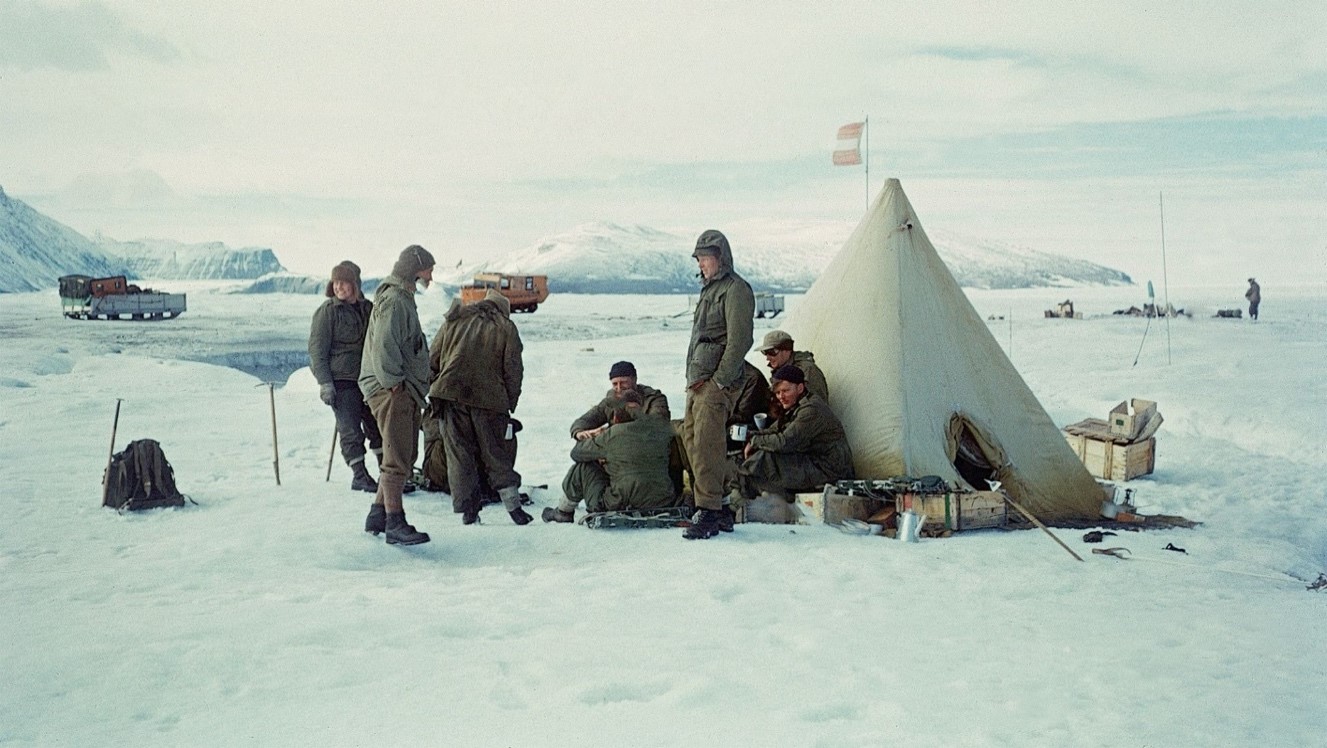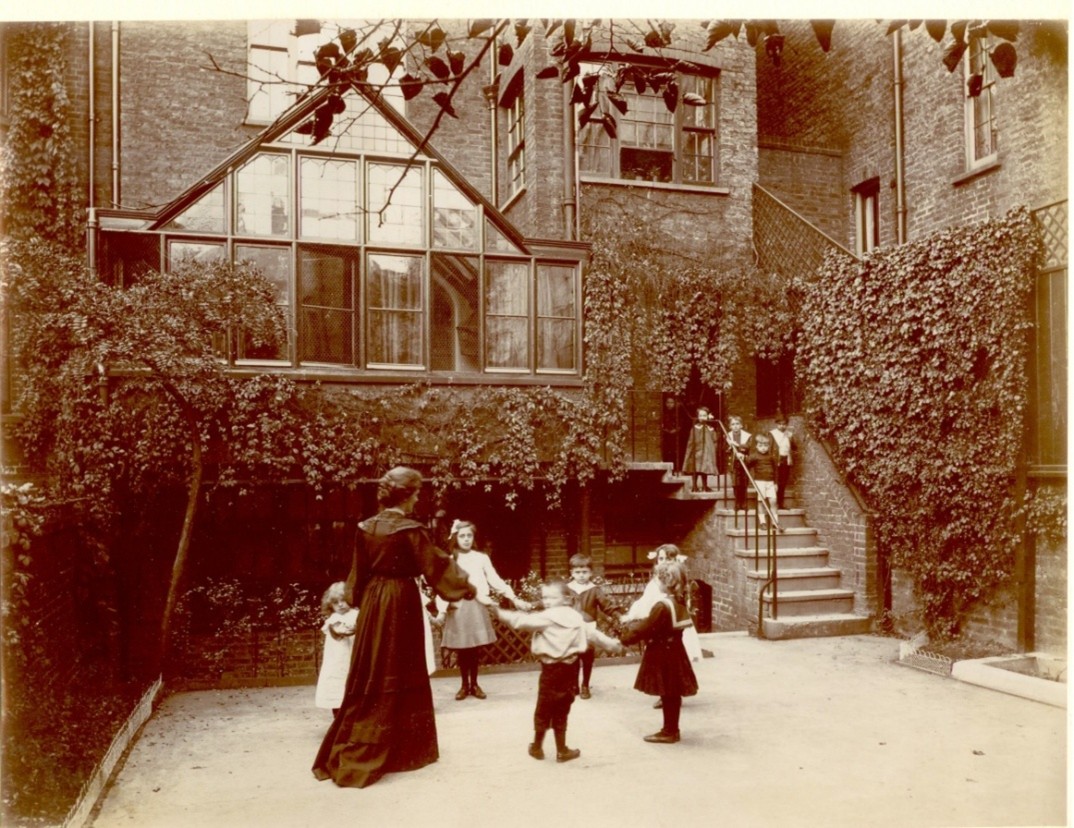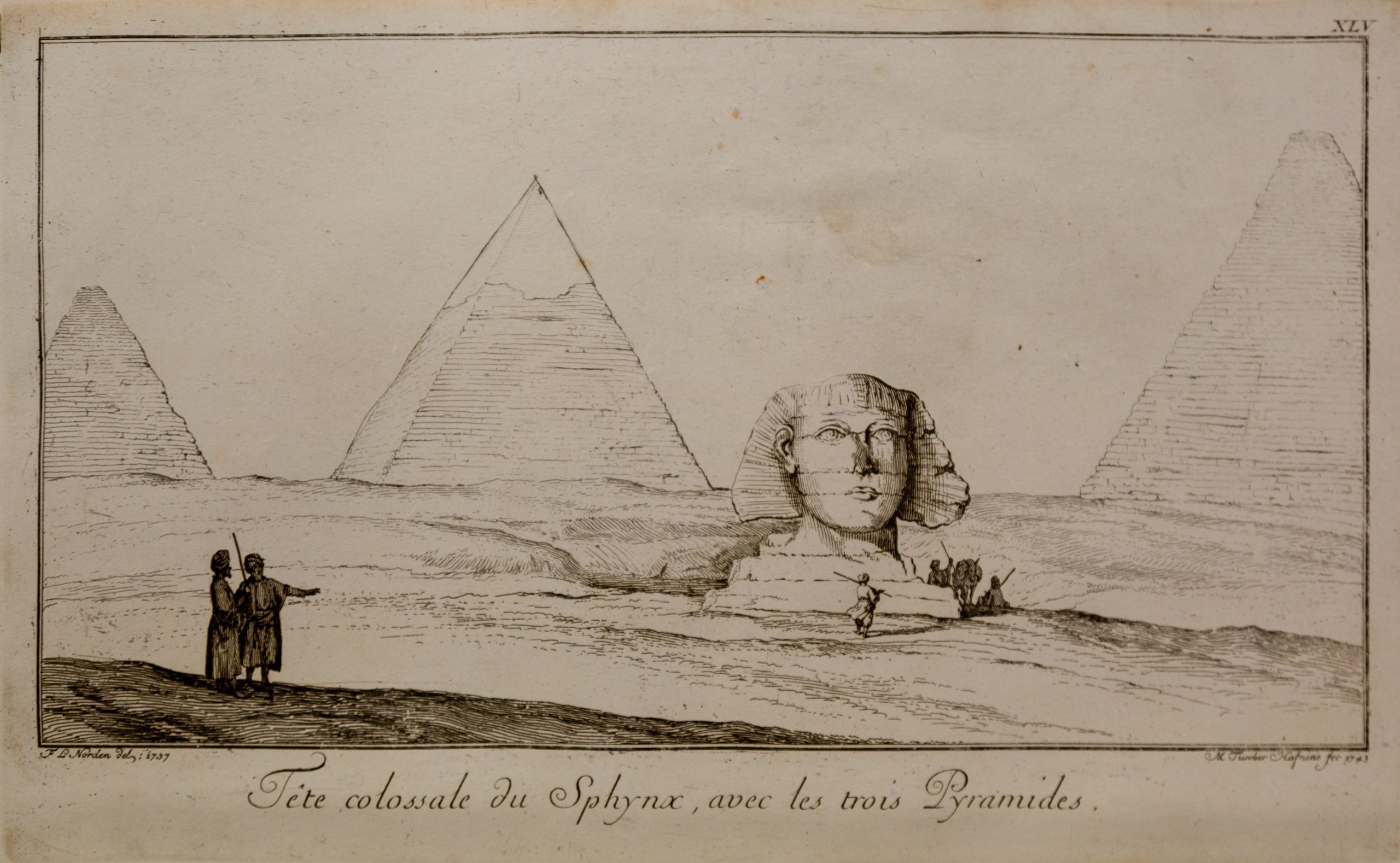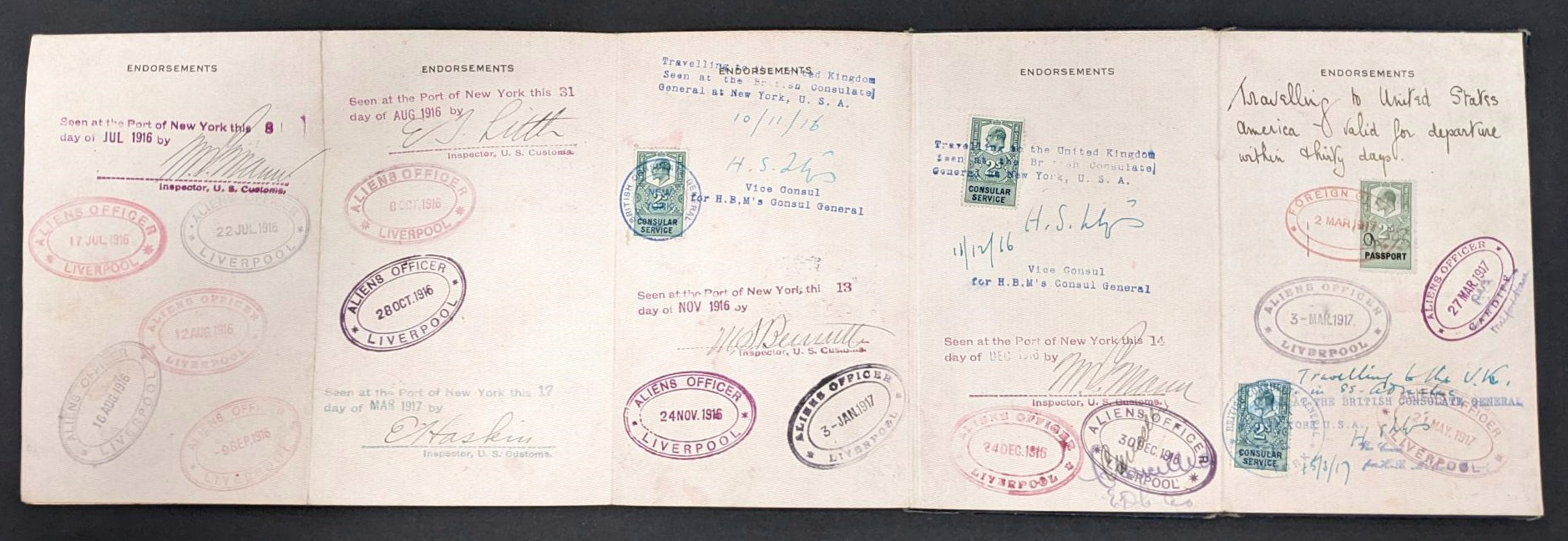Members of the British North Greenland Expedition in 1952 © Major D.E.L. Homard @ ft.com
University Archives
Newcastle University Special Collections and Archives is home to over 150 unique and distinctive archives and book collections supporting research and teaching across many subjects. One of these is an archive of material from the 1952 to 1954 British North Greenland Expedition (BNGE). This consists of 972 radio transmission transcripts recorded by team members detailing day-to-day stories and scientific research from the expedition.
The British North Greenland Expedition

The BNGE traversed north Greenland, exploring the landscape from Dronning Louise Land in the east, to Thule in the west. The team undertaking this feat ranged from glaciologists and geophysicists to naval operators and medical officers. Within the team, familiar scientific names included Stan Paterson, Colin Bull, Malcolm Slessor, James Simpson, and Newcastle University’s own Hal Lister.
Hal was an undergraduate student turned academic staff member. He was a member of many Antarctic missions and one of the first people to overwinter in both Greenland and Antarctica.
Glaciology and heartwarming messages
My interest in the archive is driven through my love of glaciology and my PhD work at Newcastle University. My project primarily focusses on Antarctic research but my knowledge of the archive was limited until I read ‘High Arctic’ by Mike Banks (1957), one of the expedition members. I have had the opportunity to delve into the archive through a placement with Newcastle’s Special Collections and Archives.
Initially, I thought I would be trawling through pages of scientific reports and findings. However, to my delight, the archive does not only contain scientifically important datasets, methods and logistics. I have also come across heart-warming messages. Birthday and Christmas messages (Figure 2), requests for alcohol and cheese and many jokes about cold temperatures.

“Santa Claus passed today loaded with presents thank mummy for letter books did you see mummy kissing santa claus very happy christmas to you both warmest love.”
Christmas message from expedition member to their child, BNGE/01-234, BNGE Archive, Newcastle University Library
The data collected still informs today’s research
The research findings and data collected on the expedition (Hamilton, 1958 and references within) have contributed to long term quantification of ice sheet change studies (Paterson and Reeh, 2001). These findings have also generated scientific questions still relevant to those researching the ice sheets today.

Throughout the expedition, the team built up strong international collaborations with American, Danish, French, Australian and Icelandic researchers. By doing so, they were able to share information on safe passage, weather reports or general advice.
Scientific findings communicated through transcripts vary from detailed glaciology reports to self-proclaimed “trilling instalment” of direct measurements of scientific information.
Ice thickness measurements
ref: BNGE/03-088, 03-086, 03-087, 3-075, BNGE Archive, Newcastle Uni Library. Fig4

Expedition continued
Although the expedition was largely successful, most polar exploration does not go without a few hiccups, for those on the BNGE expedition, there were certainly a few. Expeditions were often dangerous and the challenges that the team faced are highlighted throughout the transcripts. Although there no records of specifics, the transcripts detail the gratitude of the family of Danish team member Hans Jenson for the support they received after his death on the expedition. Hans was the only fatality, however, there were several other “lucky escapes”. Weasels (snow tractors) broke down on the ice sheet, exploded or fell into crevasses (Figure 5). Other incidents included fires breaking out in the engine room of their bases.
Ice Cap Crash of 1952
One of the most notable disasters was the “Ice Cap Crash” of 1952, that made BBC news in the UK.
Transcripts detail the rescue plans and effort of the members on the ice. The rescue took eight days. The three injured members of the aircraft crew made a full recovery in the hospital in Thule.

The British North Greenland Expedition is one of few scientific polar expeditions that took place in the mid-20th Century. It has been a long lasting inspiration for many internationally important scientific and geophysical investigations that followed. The knowledge and experiences gained has moulded our understanding of the physics of ice sheets.
The team overcame incredible challenges which are now unfotunately often taken for granted because of technological advances. The archive captures a unique first-hand story of the expedition and it has been a privilege to read through the personal accounts of member’s experiences and the uplifting messages that they sent home.
Post by Becky Sanderson, a post-graduate student studying her PHD in Glaciology.
Further Information
- Re-discovering the British North Greenland Expedition 1952-54
- Newcastle University Special Collections and Archives






